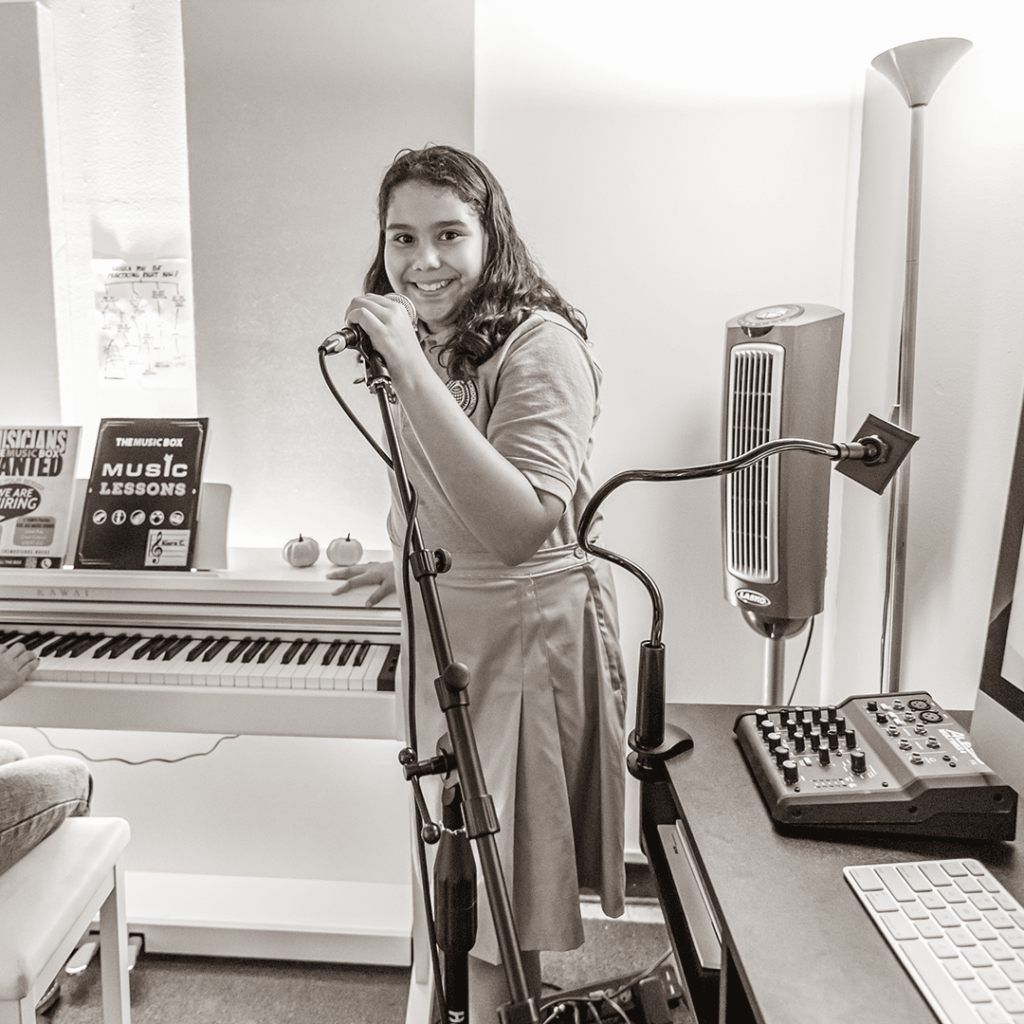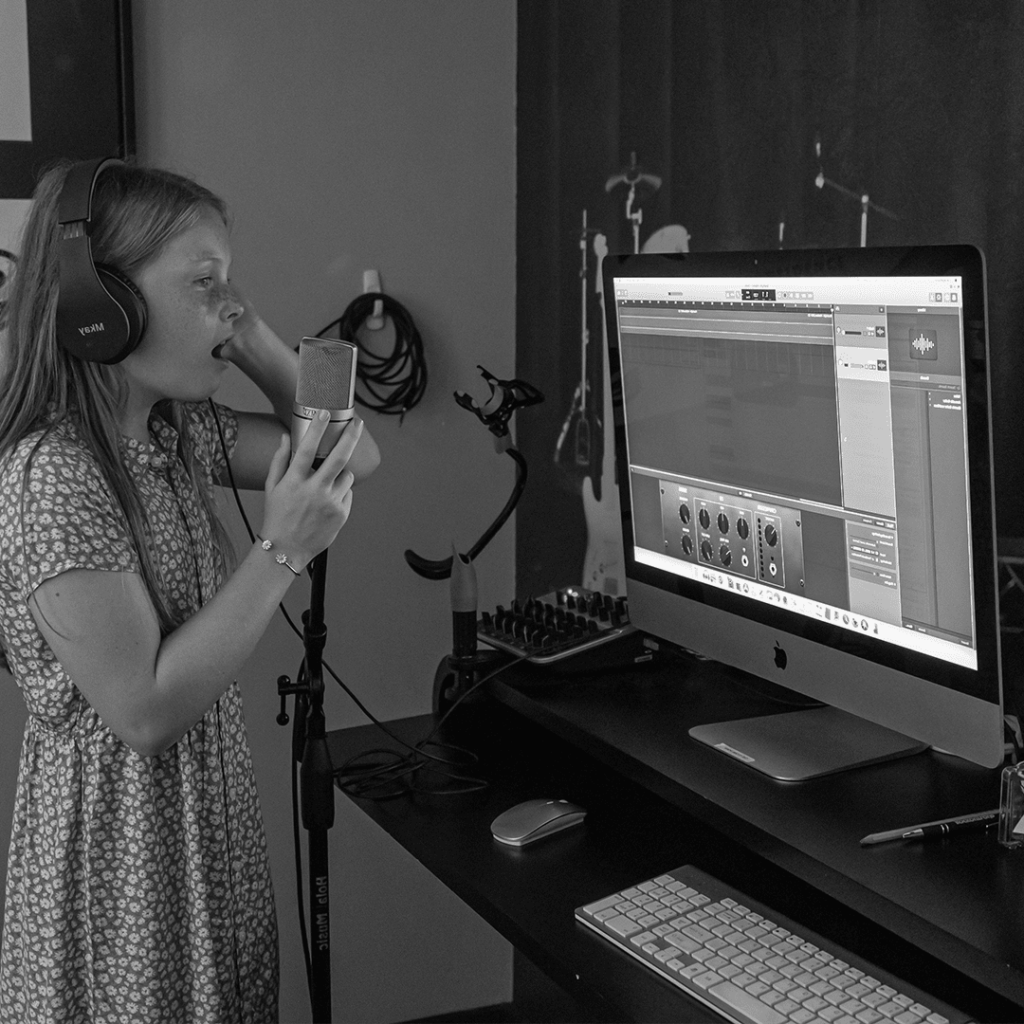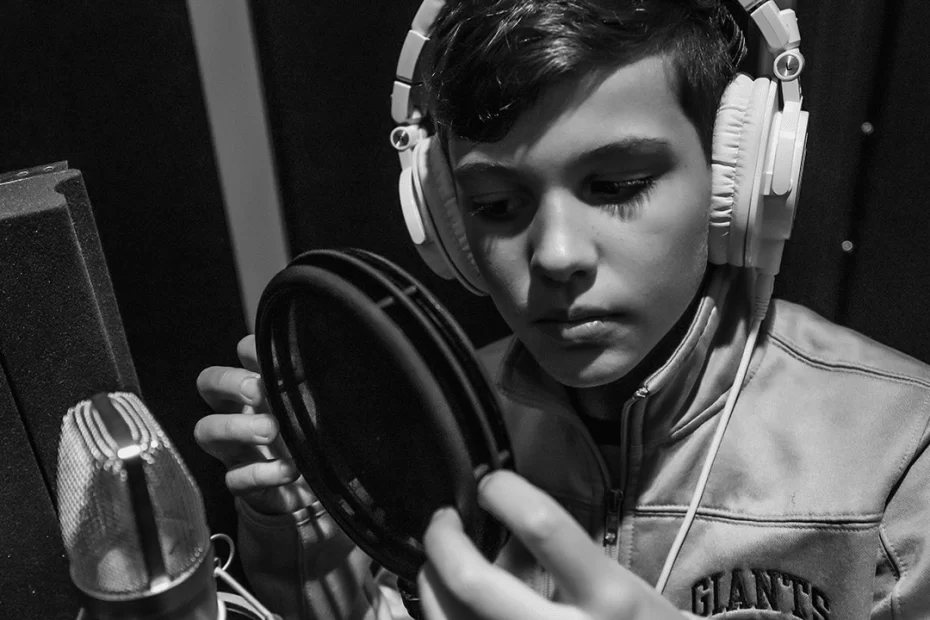There’s more to singing than just reaching the right notes and being on time. What separates professional singers from up-and-coming vocalists is their ability to fully control their voices – to shape them however they see fit whenever they want.
So, what does it mean to “control” the voice? It means to give your voice a different tone, volume, and breadth for every scenario. Save for a handful of sub-genres, nearly all styles of music feature vocalists who can go above and below their usual ranges, dish out explosive performances, keep the song steady while conserving their strength, and do so much more.
We’re The Music Box, Tampa’s premier vocal school, and we’re here to help beginners and more experienced singers (who may have skipped music theory or simply want to reach the next level) meet their goals and receive top-quality music education.
Whether you’re a parent looking for voice lessons for their child, an aspiring singer searching for ways to improve, or an immediate newcomer who simply wants to learn how to sing, you’ve come to the right place.
Lesson #1: Keep Your Throat Open
The throat moves as your jaw moves. This always happens automatically, regardless of whether we want it or not, so most people don’t pay too much attention to it. However, many singers tend to “close up” as soon as they begin singing; they’re focused on getting the right notes and lyrics, and their throat barely moves.
With a “closed” throat, it’s almost impossible to push the air out as effortlessly. If you noticed that you’re getting tired after just a few minutes of singing, or that your voice is nowhere near as loud as it should be (even with a microphone), you’ll need to make an effort to manually keep your throat open. If you want to learn more tips like this, feel free to swing by our Facebook page.
One of the simplest practices to do this is to sing in front of a mirror and observe how your throat moves when you sing different words. For example, singing syllables will almost always move your throat. Observe when your throat opens and when it closes. Simply open your jaw wide to “force” it open when you want to sing louder and clearer.

Lesson #2: Maintain a Steady Posture
Take a look at virtually any singer performing live. The one thing that they all have in common is that they keep their chest up whenever they can.
Not only does this enable them to look classy, but keeping the chest straight keeps the lungs and the diaphragm in an optimal position.
People who lean forward a lot while they’re singing can’t breathe into their full lung capacity. It’s impossible to inhale a full breath from a bent position, so make a mental note and keep your chest high whenever you can.
This can be quite fatiguing for beginners, as your body will naturally want to bend to “take a breather”. We’re here to help, so if you need more tips, come and join us on Instagram.
Lesson #3: Tongue Placement
We move our tongues a lot whenever we want to pronounce different words and letters. The same applies to singing. However, there are many instances where singers are supposed to hold a note for longer periods or even layer it with some vibratos.
Without the right tongue placement, many vocal techniques are downright impossible. Even though you’ll automatically place your tongue wherever you usually do while singing, it’s important to try and keep it as close to the floor of your mouth as possible.
This will make nasal tones more manageable and allow you to fully express your vocal timbre. With a bit of focused effort, you’ll develop a habit of placing your tongue down as soon as you start singing. If you want to see how some of our brightest young students are doing it, come and check us out on TikTok.
Lesson #4: Open Wide
Another thing that most professional singers have in common is that they stretch their jaws as wide as they can while they’re singing.
Even though this is a fairly straightforward concept, there’s a bit more to it than meets the eye. First of all, the larger the gap, the louder you’ll be, which is not always optimal. Secondly, there are times when you’ll be singing certain words that don’t allow you to open your mouth wide (either you’re singing fast or the words don’t permit it).
Finding the right angles so that your facial expressions look at least remotely natural is the key to utilizing this simple technique to receive an instant boost to your vocal power and volume.

Lesson #5: Breathe Into Your Diaphragm
One of the first lessons we teach at The Music Box is diaphragm singing (and diaphragm breathing). Simply put, you won’t be able to sing for long if you inhaled every breath directly into and out of your lungs. Not only will you run out of breath very quickly – you’ll also fry your vocal cords this way.
Diaphragm breathing isn’t the most intuitive technique, but it’s a necessary one. It revolves around directing the airflow as your diaphragm expands and contracts – this is an “automatic” process, and you’ll need to transform it into a deliberate effort.
While breathing into and out of your diaphragm, you’ll be able to manage your air supply more efficiently. You’ll also relieve the pressure from your throat since your inhales and exhales will be more focused (and less sharp). By mastering this technique, you’ll learn how to sing longer, stronger, and more controlled – diaphragm breathing may be a beginner’s technique, but all pros use it.
Join The Music Box and Begin Your Vocal Journey Today
Our HQ is located at 4321 Gunn Highway in Carrollwood, Tampa, and we’re always happy to welcome fresh singers into the fold. If you’d rather enroll online, all you have to do is follow this link, and our staff will help you through the rest of the process.



